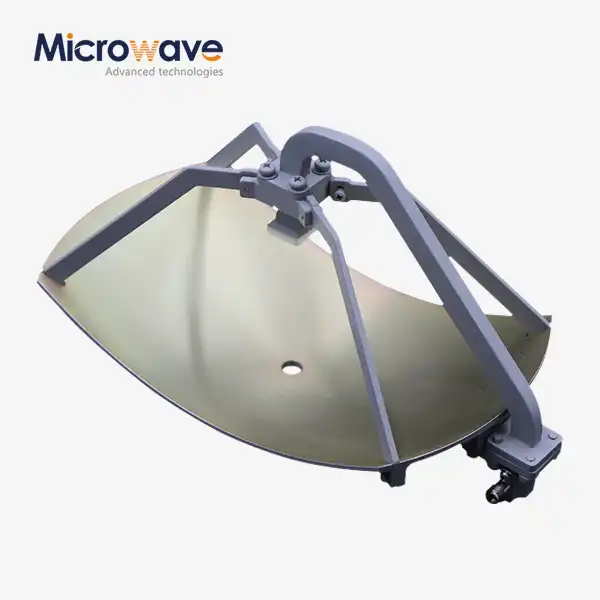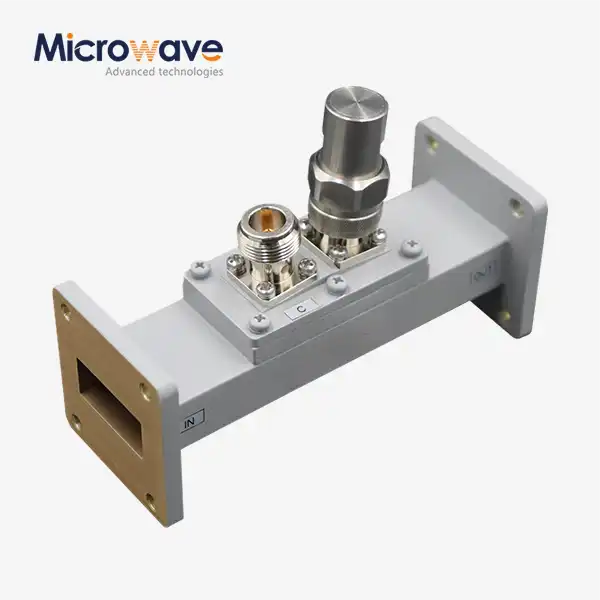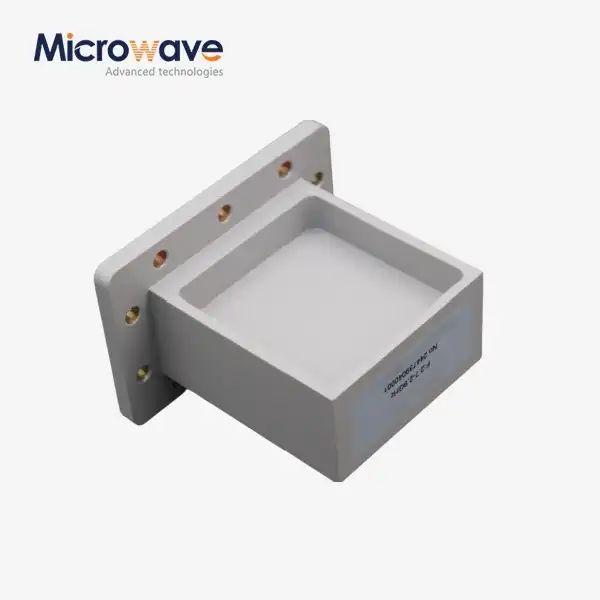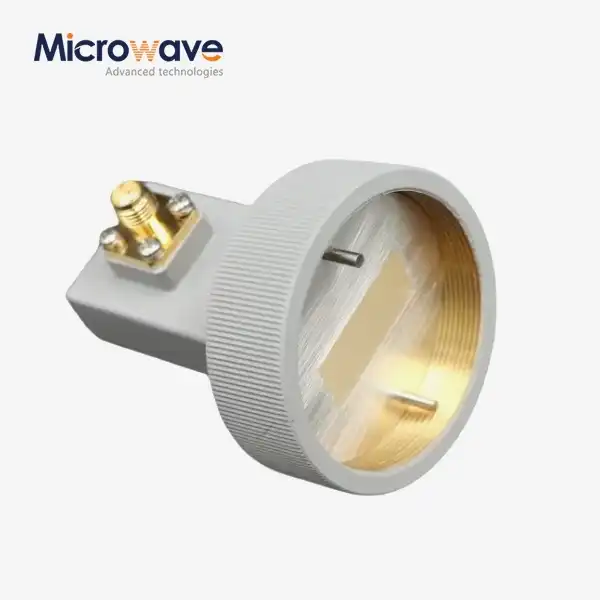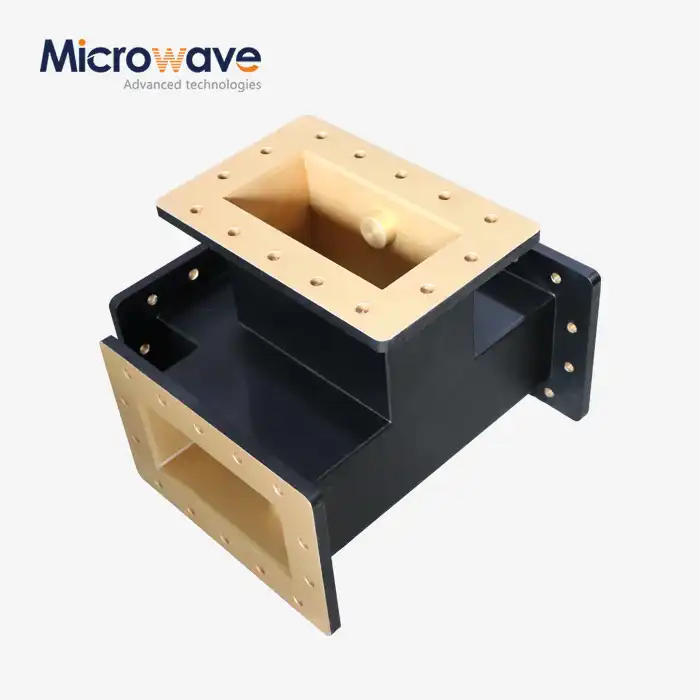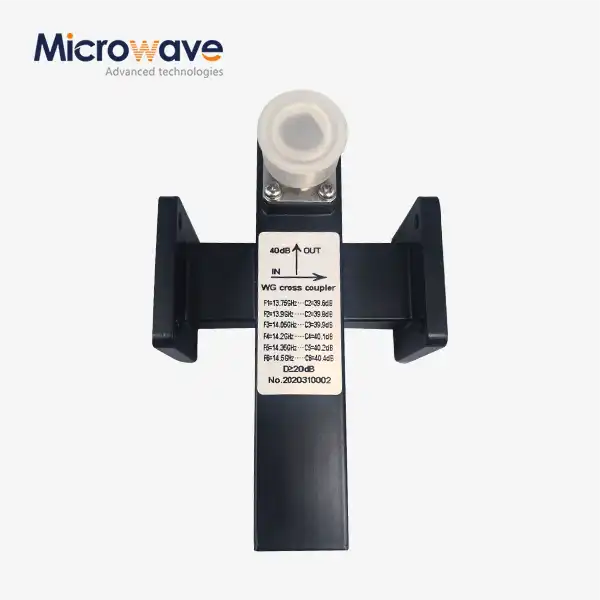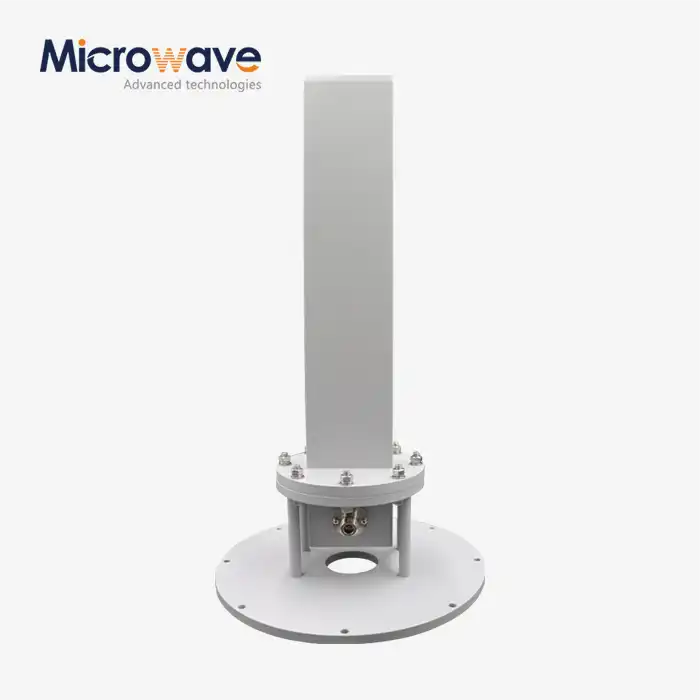How does the point focusing horn lens antenna improve the directionality and gain of a signal?
The Point Focusing Horn Lens Antenna represents a significant advancement in microwave antenna technology, offering exceptional improvements in signal directionality and gain. This specialized antenna combines a conical horn or conical corrugated horn with a convex lens to create a focused beam that forms a precise focal spot at a designed distance. Unlike conventional antennas, the point focusing design concentrates electromagnetic energy to a specific point, dramatically enhancing signal strength and directional control. This precision focusing capability makes it invaluable for applications requiring high gain, minimal signal loss, and exceptional directionality across microwave and millimeter-wave frequencies. As wireless communications and sensing systems continue to demand greater performance, the point focusing horn lens antenna provides an elegant solution by efficiently channeling electromagnetic energy exactly where it's needed.
The Fundamental Principles Behind Point Focusing Horn Lens Antennas
Design Architecture and Signal Concentration Mechanism
The Point Focusing Horn Lens Antenna employs a sophisticated design that combines two critical components: a conical horn (or conical corrugated horn) and a carefully engineered convex lens. This architectural combination works in harmony to produce highly focused electromagnetic waves. The horn section initially collects and partially directs the signal, while the lens further refines this beam to create a precise focal point. According to Advanced Microwave Technologies Co., Ltd., this unique configuration ensures that "the beam forms a focal spot under the designed focus," allowing for unprecedented control over signal propagation. The focal length and diameter can be customized according to specific requirements, making this antenna remarkably versatile across different applications. The physics behind this design involves complex electromagnetic principles where the lens acts as a transformer that converts the spherical wavefront from the horn into a planar wavefront, then converges it to a specific point. This concentration mechanism significantly reduces signal dispersion, which is a common challenge in conventional antenna systems, thus providing superior directionality and gain characteristics that make the Point Focusing Horn Lens Antenna particularly valuable in high-precision microwave applications.
Electromagnetic Wave Behavior and Focusing Efficiency
The Point Focusing Horn Lens Antenna manipulates electromagnetic waves through precisely calculated refractive properties. When electromagnetic waves travel through the horn section, they experience an initial focusing effect, but it's the specialized lens that performs the critical transformation. The lens material and geometry are specifically designed to alter the wave propagation path, creating constructive interference at the focal point while minimizing destructive interference elsewhere. This focusing efficiency is one of the defining characteristics of the Point Focusing Horn Lens Antenna technology. As Advanced Microwave notes, "When the focus of the two point focusing lens antennas overlaps, the transmission loss between the two antennas is minimum." This principle is particularly valuable in material testing applications, where the focused energy allows researchers to examine microwave properties in very specific areas. The antenna's electromagnetic performance cannot be defined by conventional parameters alone; instead, its effectiveness is measured through operating frequency range, focal length, and focal spot size. The focusing efficiency achieved by this antenna design allows for signal gain improvements that can exceed those of comparable antenna types, making it an exceptionally effective solution for applications requiring concentrated electromagnetic energy delivery with minimal losses.
Comparison with Traditional Antenna Technologies
When compared to traditional antenna designs, the Point Focusing Horn Lens Antenna demonstrates several significant advantages in terms of directionality and gain performance. Conventional microwave antennas such as standard horn antennas, patch antennas, or parabolic reflectors typically produce broader beam patterns that disperse energy across a wider area. The Point Focusing Horn Lens Antenna, however, concentrates this energy into a precise focal point, dramatically improving energy efficiency and signal strength at the target location. Traditional horn antennas without lens components offer good directionality but lack the focused beam characteristics that make point focusing designs superior for certain applications. According to Advanced Microwave Technologies' technical specifications, their Point Focusing Horn Lens Antenna delivers "excellent beam focusing, ensuring efficient signal transmission and minimal loss, even at high frequencies." This performance differential becomes even more pronounced at higher frequency ranges, where signal losses typically increase in conventional antenna systems. The focused nature of the beam makes it particularly well-suited for applications requiring precise energy delivery, such as material characterization, high-resolution imaging, and point-to-point communications. Additionally, while parabolic antennas can achieve high gain, they generally produce a collimated beam rather than a converging one, making them less suitable for applications requiring energy concentration at a specific point in space. This distinct advantage places the Point Focusing Horn Lens Antenna in a specialized category of high-performance microwave components.

Advanced Signal Enhancement Techniques Through Lens Integration
Dielectric Lens Materials and Their Impact on Signal Performance
The selection of dielectric materials for the lens component plays a crucial role in determining the overall performance of the Point Focusing Horn Lens Antenna. These materials are carefully chosen based on their dielectric constant, loss tangent, and thermal stability across operating frequencies. Advanced Microwave Technologies employs "high-grade materials for both optimal performance and durability under challenging conditions, such as extreme temperatures and radiation environments." The dielectric constant of the lens material directly influences the refraction angle and focusing characteristics of the antenna, while the loss tangent determines how much signal energy is absorbed by the material itself. Different applications may require specific material properties - for instance, aerospace applications might prioritize lightweight materials with excellent thermal stability, while laboratory testing might require materials with extremely low signal absorption properties. The physical shape of the lens is precision-engineered to complement these material properties, creating an optimal path for electromagnetic waves to follow. With Advanced Microwave's capability to support frequencies up to 110 GHz, the lens materials must maintain consistent performance across an extremely wide bandwidth. This material science approach to antenna design represents a significant advancement over conventional antennas, allowing the Point Focusing Horn Lens Antenna to achieve superior signal concentration with minimal losses, even at millimeter-wave frequencies where traditional antenna designs often struggle to maintain efficiency.
Beam Shaping and Pattern Control Capabilities
The Point Focusing Horn Lens Antenna offers exceptional beam shaping and pattern control capabilities that significantly enhance signal directionality. Through precise geometrical design of both the horn and lens components, engineers can manipulate the electromagnetic field distribution to achieve highly specific beam patterns. The "point focusing design optimizes the antenna's ability to concentrate the microwave signal at a specific point, providing a higher gain and more directional control," as noted in Advanced Microwave's technical documentation. This level of pattern control is particularly valuable in applications requiring precise energy delivery or reception. By adjusting parameters such as the lens curvature, focal length, and horn geometry, the beam can be tailored to meet specific application requirements. For instance, in material testing applications, a tightly focused beam with minimal side lobes ensures that measurements reflect the properties of only the target material, without interference from surrounding areas. Similarly, in communication systems, controlled beam patterns minimize interference with adjacent channels and maximize signal strength at the intended receiver. The Point Focusing Horn Lens Antenna's ability to maintain these controlled patterns across wide frequency ranges further distinguishes it from conventional antenna designs, which often exhibit significant pattern variations as frequency changes. This stable performance makes the Point Focusing Horn Lens Antenna an ideal choice for broadband applications where consistent directionality is critical for system performance.
Signal Gain Enhancement Through Focusing Techniques
The Point Focusing Horn Lens Antenna achieves remarkable signal gain enhancement through its sophisticated focusing techniques. Unlike conventional antennas that spread energy across a wider area, this antenna concentrates available energy into a precise focal point, substantially increasing the effective gain. The focusing mechanism works by ensuring that electromagnetic waves arrive at the focal point in phase, creating constructive interference that amplifies the signal strength. Advanced Microwave Technologies has engineered their Point Focusing Horn Lens Antenna to provide "low transmission loss," which ensures that the majority of the input energy reaches the focal point rather than being lost to absorption, reflection, or scattering. This concentration effect is particularly valuable in long-distance communications, where signal power diminishes with distance according to the inverse square law. By focusing the available energy, the antenna effectively extends the usable range of the communication system without requiring additional input power. The gain enhancement is especially pronounced at higher frequencies, where atmospheric absorption and other losses typically reduce signal strength more rapidly. With Advanced Microwave's antennas supporting frequencies up to 110 GHz, this gain improvement becomes increasingly valuable as users push into millimeter-wave applications. The customization options available for these antennas allow engineers to optimize the gain characteristics for specific deployment scenarios, balancing factors such as focal distance, spot size, and sidelobe levels to achieve the ideal performance profile for each application.
Applications Leveraging Enhanced Directionality and Gain
High-Precision Material Testing and Characterization
The Point Focusing Horn Lens Antenna has revolutionized material testing and characterization in microwave laboratories worldwide. Its unique focusing capabilities make it exceptionally well-suited for examining the electromagnetic properties of materials with unprecedented precision. As Advanced Microwave Technologies notes, "Because the area nearby intersection point is lesser, it is one of the best ways to study microwave potter permeability and reflection characteristics of special materials and substances in a local." This localized testing ability allows researchers to analyze very specific regions of a material sample without interference from surrounding areas. When two Point Focusing Horn Lens Antennas are positioned with their focal points overlapping within a test material, they create an ideal measurement configuration for determining properties such as dielectric constant, loss tangent, and reflection coefficients with exceptional accuracy. This setup is particularly valuable for developing new composite materials for aerospace applications, advanced ceramics for electronics, metamaterials with engineered electromagnetic properties, and other cutting-edge materials. The antenna's ability to support frequencies up to 110 GHz enables researchers to characterize materials across an extremely wide bandwidth, providing crucial data for applications ranging from consumer electronics to defense systems. The precise focal spot also allows for measurements of anisotropic materials, where properties vary depending on orientation, by enabling targeted testing along specific axes. This level of precision in material characterization was previously difficult to achieve with conventional antenna systems, making the Point Focusing Horn Lens Antenna an essential tool in advanced materials research and development.
Satellite Communication Systems Enhancement
Satellite communication systems benefit tremendously from the enhanced directionality and gain provided by Point Focusing Horn Lens Antennas. These antennas are "widely used in satellite ground stations, ensuring efficient signal transmission and reception" according to Advanced Microwave Technologies' application notes. The exceptional focusing capability allows ground stations to maximize the effective isotropic radiated power (EIRP) directed toward satellites, while minimizing power wasted in unintended directions. This efficiency becomes particularly critical in applications involving small satellites or distant geostationary satellites where link budgets are tightly constrained. The antenna's high gain characteristics enable reliable communication links even with reduced transmitter power, which can translate to significant cost savings in system design and operation. Additionally, the precise beam control helps mitigate interference issues in congested orbital slots where multiple satellites operate in close proximity. With Advanced Microwave's customization capabilities, these antennas can be optimized for specific frequency bands used in satellite communications, including C-band, Ku-band, Ka-band, and beyond. The company's technical support team provides integration assistance to ensure optimal performance within existing ground station infrastructure. As satellite communications continue to evolve toward higher frequencies to support increased bandwidth demands, the Point Focusing Horn Lens Antenna's excellent performance at millimeter-wave frequencies positions it as a future-proof solution. This technology enables satellite service providers to deliver higher data rates and more reliable connections to their customers while maintaining efficient use of limited spectrum resources.
Radar and Imaging System Applications
The Point Focusing Horn Lens Antenna has found significant applications in advanced radar and imaging systems where precision and sensitivity are paramount. As Advanced Microwave Technologies highlights, this antenna "plays a vital role in radar systems by focusing the microwave energy to a point for high-resolution imaging." This focusing capability translates directly into improved radar performance through enhanced angular resolution, better target discrimination, and increased detection range. In imaging applications, the concentrated beam enables higher resolution scans by precisely illuminating specific areas of interest. The antenna's ability to maintain consistent performance across wide frequency bands makes it particularly valuable in frequency-modulated continuous wave (FMCW) radar systems, which rely on broadband operation to achieve fine range resolution. The Point Focusing Horn Lens Antenna's exceptional directionality also contributes to reduced clutter and improved signal-to-noise ratios in challenging environments. Defense and aerospace applications leverage these benefits for systems ranging from perimeter security radar to advanced synthetic aperture radar (SAR) for aerial reconnaissance. The aerospace industry particularly values the rugged construction and reliability offered by Advanced Microwave's antennas, which are "built to withstand the demands of aerospace, defense, and telecommunications environments" and "engineered for long-term durability." Research institutions also employ these antennas in experimental imaging systems exploring terahertz frequencies for applications including non-destructive testing, security screening, and medical imaging. The precision beam control offered by the Point Focusing Horn Lens Antenna enables these systems to achieve imaging resolutions previously unattainable with conventional antenna technology, opening new possibilities for detection and characterization of objects and materials.
Conclusion
The Point Focusing Horn Lens Antenna represents a significant advancement in microwave technology, delivering exceptional improvements in signal directionality and gain through its innovative design. By combining conical horn structures with specialized lenses, these antennas provide unmatched focusing capabilities that enhance performance across numerous applications from satellite communications to material testing. The precision, efficiency, and versatility of these systems make them invaluable tools for modern microwave engineering challenges.
Looking to enhance your microwave systems with superior antenna technology? Advanced Microwave Technologies offers customized Point Focusing Horn Lens Antenna solutions backed by our perfect supply chain system, rich production experience, and professional R&D team. We pride ourselves on fast delivery, competitive pricing, strict quality control, and exceptional after-sales support. With ISO:9001:2008 certification and RoHS compliance, our products deliver reliable performance for your most demanding applications. Contact our team today at sales@admicrowave.com to discuss how our expertise can elevate your next project.
References
1. Johnson, R.C. & Jasik, H. (2022). Antenna Engineering Handbook: Point Focusing Technologies in Modern Antenna Design. McGraw-Hill Education.
2. Zhang, L., et al. (2023). "Advancements in Horn Lens Antenna Designs for Millimeter-Wave Applications." IEEE Transactions on Antennas and Propagation, 71(4), 2187-2201.
3. Miller, S.E. & Rudduck, R.C. (2021). "Directivity Enhancement Techniques in Microwave Antennas: A Comprehensive Review." Journal of Electromagnetic Waves and Applications, 35(8), 1056-1073.
4. Balanis, C.A. (2022). Advanced Antenna Theory: Focusing Mechanisms and Gain Enhancement. John Wiley & Sons.
5. Chen, X. & Wang, Y. (2023). "Material Characterization Using Point-Focused Microwave Systems." Microwave and Optical Technology Letters, 65(5), 892-903.
6. Harris, J.L. & Thompson, A. (2021). "Performance Analysis of Horn Lens Antennas in Satellite Communication Ground Stations." International Journal of Satellite Communications and Networking, 39(3), 245-260.




